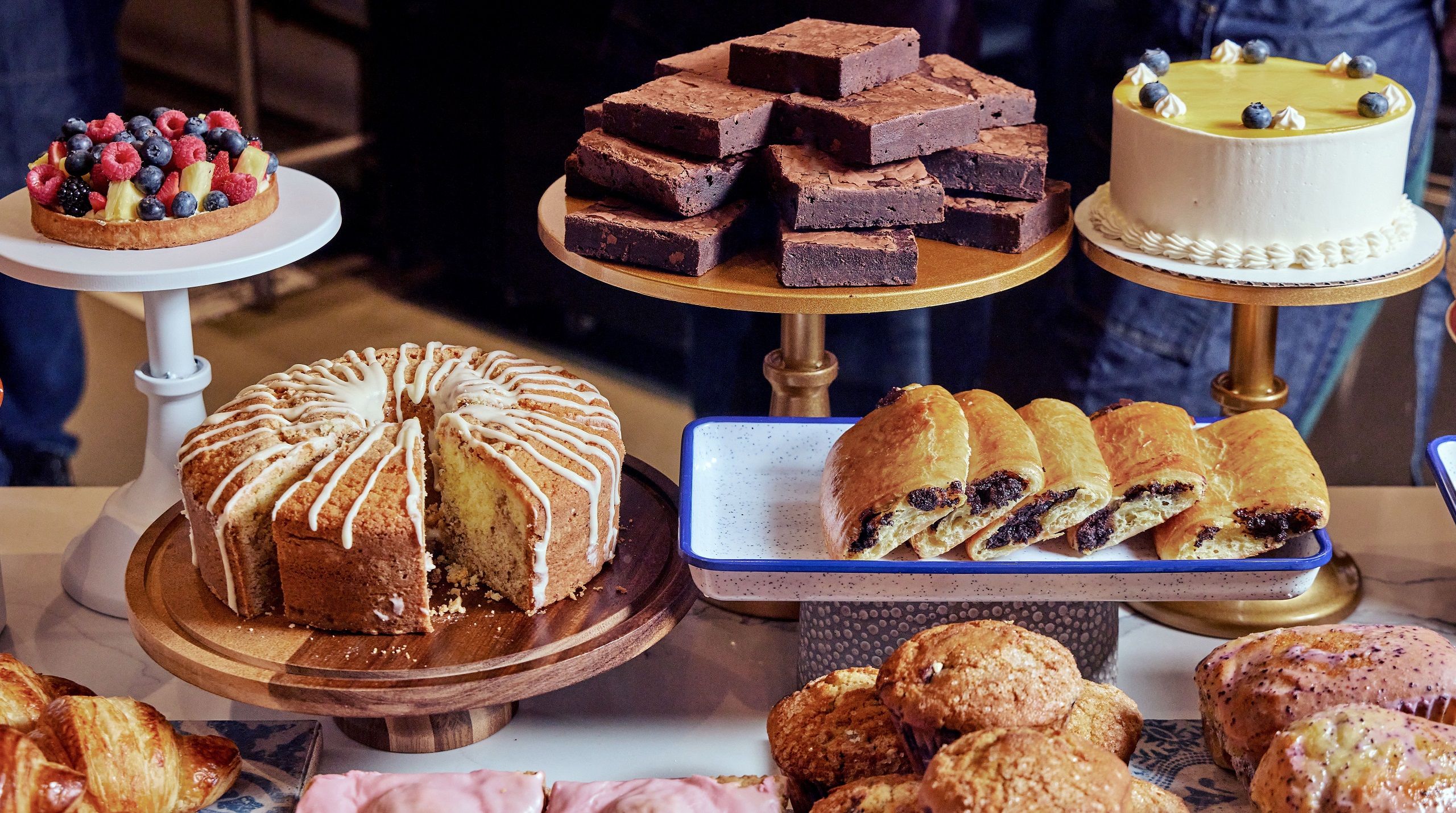Top-Rated Bakery Catering Maddington for Appetizing Treats
Top-Rated Bakery Catering Maddington for Appetizing Treats
Blog Article
Comprehending the Art of Pastry Shop Products: From Fresh Baked Breads to Irresistible Pastries and Finger Foods
From the scientific research behind the ideal loaf of bread, where fermentation and gluten growth play crucial roles, to the finesse required for developing split breads, each aspect discloses an engaging story of craftsmanship. The versatility of finger foods highlights just how taste and texture can be skillfully integrated to engage diverse preference choices.
The Science of Bread Making
At the heart of every loaf of bread exists a fascinating interplay of chemistry and biology. The procedure of bread making begins with the combination of flour, water, salt, and yeast-- each active ingredient playing a critical function in the last item.
Yeast, a living organism, ferments the sugars present in the flour, generating carbon dioxide and alcohol while doing so. The co2 gas creates bubbles in the dough, triggering it to rise and establish a light structure. The temperature level and humidity during fermentation significantly influence yeast task and, consequently, the bread's flavor and structure.

Learning Pastry Strategies
Exactly how can one attain the delicate equilibrium of texture and taste that defines remarkable bread? Understanding bread techniques needs a deep understanding of ingredients, techniques, and the scientific research behind them. Essential to this craft is the option of premium ingredients-- flour, butter, sugar, and eggs-- each playing a critical role in the end product's taste and texture.
The method of lamination, which entails folding layers of dough and butter, produces the preferred flakiness in breads like croissants and puff bread. Accuracy in temperature is important, as butter needs to remain chilly to make certain optimal layers. Correct blending techniques, such as the creaming technique for cakes, ensure even unification of air and fat, resulting in a light and ventilated crumb.
Furthermore, preserving the appropriate moisture levels during baking can substantially influence the outcome, making sure that breads climb correctly and achieve that golden-brown finish. Lastly, the art of pastry likewise demands persistence and method; each attempt enhances one's skill and understanding of the complex equilibrium needed to produce alluring breads that delight the senses. Mastery in these techniques ultimately distinguishes a proficient bread chef from an amateur.
Types of Finger Foods
The world of culinary delights expands past breads to include a broad array of finger foods, which are commemorated for their ease and adaptability. These bite-sized deals with are perfect for social celebrations, supplying a variety of flavors and textures that satisfy diverse palates.

On the hop over to here sweeter side, bite-sized cupcakes and mini tarts provide a wonderful coating to any kind of dish, appealing to those with a craving for sweets. Additionally, cheese and charcuterie boards function as an innovative selection, allowing guests to customize their bites with a selection of meats, fruits, cheeses, and nuts.
Taste Profiles in Cooking
Cooking is a complex dancing of flavor profiles that combines sweet, savory, and umami notes to develop an unified experience for the taste. Comprehending these profiles is vital for bakers seeking to elevate their creations.
Ingredients such as delicious chocolate and caramel present complex wonderful notes that can either dominate or match other tastes. Ingredients like cheeses, spices, and natural herbs can change a simple dough right into a multifaceted taste experience.
Umami, often forgotten in baking, plays a substantial role in enhancing tastes. Ingredients such as aged cheeses, fermented products, or perhaps certain nuts add to a full-flavored depth that improves total taste.
Furthermore, the interaction of acidity from components like buttermilk or citrus passion can lighten up flavors, providing a revitalizing counterpoint to sweet taste. By thoughtfully combining these flavor accounts, bakers can craft items that reverberate with varied palates, producing an unforgettable culinary experience. Eventually, grasping taste accounts is key to technology worldwide of baking.
Vital Cooking Devices and Active Ingredients
Understanding flavor profiles in baking sets the stage for selecting the right tools and active ingredients that facilitate the creation of extraordinary baked products. The structure of successful baking depend on having vital devices at hand. Secret products include blending bowls, gauging mugs, and spoons for accuracy, in addition to a strong stand mixer or hand mixer for uncomplicated mixing. A trustworthy collection of baking pans-- such as sheet pans, loaf frying pans, and cake frying pans-- is vital for attaining wanted shapes and textures.
Flour serves as the foundation of most recipes; picking the right kind-- be it all-purpose, pastry, or bread flour-- can drastically influence the result. Cooking powder and cooking soda are vital for creating lift in cakes and pastries.
Additionally, integrating taste enhancers like vanilla essence, seasonings, and citrus zest can raise your productions. By guaranteeing accessibility to these essential tools and active ingredients, bakers can with confidence start their cooking trip, crafting a diverse array of wonderful baked products.
Final Thought
In conclusion, the art of pastry shop items includes an extensive understanding of both clinical concepts and imaginative techniques. Mastery in bread production, bread preparation, and finger food discussion reveals the visit their website intricate connections between procedures and active ingredients. Furthermore, discovering varied taste accounts enhances the baking experience, while vital tools and active ingredients provide the foundation for success. Inevitably, the enchanting globe of baking flourishes on the harmonious interaction of scientific research and creativity, causing a myriad of delightful cooking creations.
Exactly how can one achieve the fragile balance of texture and taste that specifies extraordinary pastry? Basic to this craft is the selection of high-grade pop over to these guys components-- flour, butter, sugar, and eggs-- each playing a crucial duty in the final product's taste and texture.

Comprehending flavor profiles in baking sets the phase for choosing the right tools and active ingredients that help with the production of exceptional baked items. Discovering diverse flavor accounts enhances the baking experience, while necessary tools and active ingredients offer the structure for success.
Report this page